Items Included
- Leica M-A (Typ 127) Rangefinder Camera (Silver)
- Body Cap
- Carrying Strap
- Roll of Kodak Tri-X 400 35mm Black & White Negative Film
- Limited 1-Year Leica Society Digital Membership
- Limited 3-Year Manufacturer Warranty
- 35mm Film Rangefinder
- Fully Mechanical Operation
- 0.72x Bright Line Viewfinder
- Selectable Image Field Frame Lines
- Focal Plane Shutter: Up to 1/1000 Sec.
- Flash Sync at 1/50 Sec.
- Compatible with 16-135mm M-Mount Lenses
- Rear ISO Reminder Dial
- Chromed Brass Top and Bottom Covers
- Made in Germany
Focusing on the founding principles of photography, the Leica M-A (Typ 127) is a 35mm film rangefinder camera characterized by its simplicity and unobtrusiveness. As a completely mechanical camera, no battery is required for operation and the only exposure control offered is a choice of shutter speed, up to 1/1000 sec. A large, bright 0.72x-magnification viewfinder pairs with a precise rangefinder mechanism to enable comparative manual focusing control with M-mount lenses, along with parallax-corrected compositional framing. The body features silver-colored chromed brass top and bottom covers, as well as an all-metal body design, to offer both durability as well as an aesthetic, minimal appearance. Designed for intuitiveness and efficient operability, the precision afforded by the M-A serves to complement a straight-forward working method.
| Lens Mount | |
| Film Format | |
| Shutter Speed | |
| Type | |
| Flash | |
| Battery | |
| Weight |
| Lens Mount | |
| Film Format | |
| Frame Format |
| Shutter Type | |
| Shutter Speed | |
| Bulb/Time Mode | |
| Bulb/Time Mode | |
| Exposure Modes |
| Type | |
| Magnification |
| Flash | |
| Maximum Sync Speed | |
| External Flash Connection |
| Battery | |
| Film Winding | |
| Tripod Mounting Thread | |
| Dimensions | |
| Weight |
| Package Weight | |
| Box Dimensions (LxWxH) |

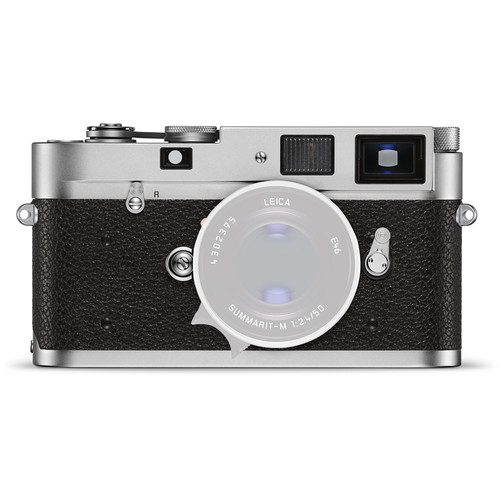
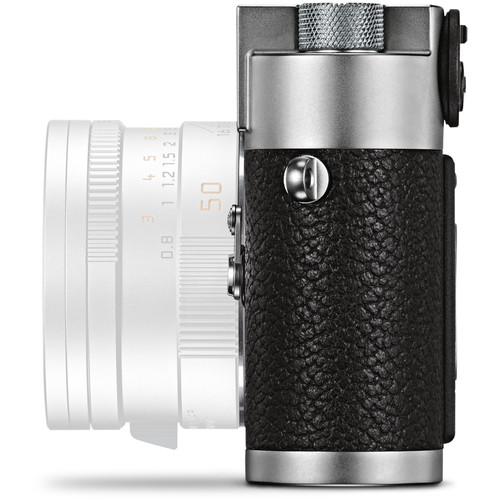
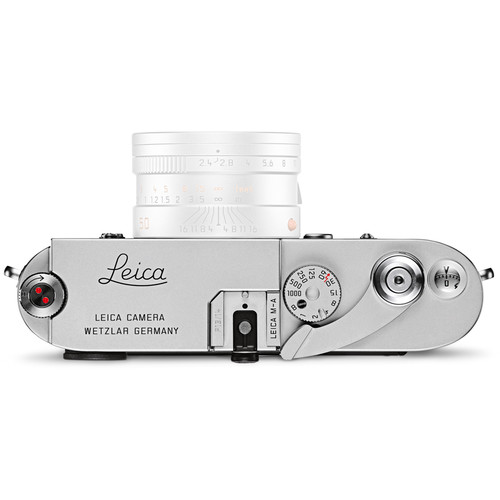
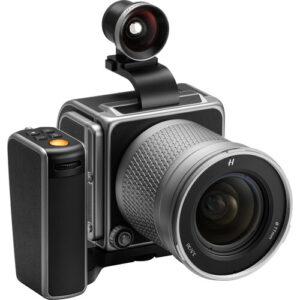
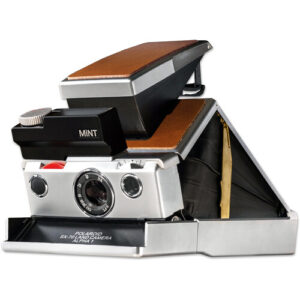
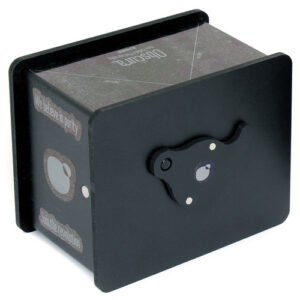
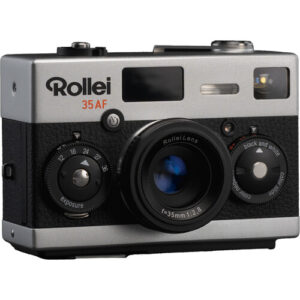

Leon F –
I did not buy this camera but will do a review here. With the release of this fully mechanical film camera in an age where everything is digital I cannot else but say that Leica totally get it. Leica understands that real photographers don’t need a lot to take good pictures, basically an understanding of light and exposure an aperture, shutter and some light sensitive material aka 35 mm film. How else did all the masters of the 1930’s through to the 1960’s take their pictures? They did not have any of the bells and whistles that modern digital cameras have. Simplicity sparks creativity. Less is more. Few companies seem to understand that concept anymore. Don’t be fooled by thinking that a digital M is the same as fully mechanical M, they are not. They may look the same but in terms of quality, feel and responsiveness, the digital M’s don’t even come close to this Leica M-A or the 2003 Leica MP for that matter. The digital M’s are basically expensive computers with a piece of glass destined to be outdated in 5 – 10 years from now, as overall digital technology will improve. Despite the high quality materials that Leica uses, they still are digital cameras or commodity electronics. Who would buy a 10MP digital Leica M8 from 2006 today and for how long will it continue to work without problems ? For the Leica M-A, there is nothing to improve. It’s fully mechanical. Nothing to upgrade. No screens, no megapixels, no firmware. It produces negatives that cannot get corrupted on faulty hard drives. It uses zone focusing on the lens and allows you to focus faster than the fastest DSLR available. You can make traditional darkroom prints but also digital inkjet prints if you want to. It will not be obsolete in 10 years from now as, contrary to what they want you to believe, film is not dead. Not at all. It will never be dead either. The joy of holding and using this camera is something you have to experience. If you have the funds, go out and buy it. It will be the best and most pleasurable camera you have ever owned. It rises far above ANY digital camera ever released. It’s just about the image and the fun of taking pictures. All else is secondary. Thanks to Leica for understanding this!
Leon F –
Ribnar –
Why Leica M-A when we have the M3, M2, M6, MP… It is more a philosophical discussion and less a technical one. I am sure there is no possible technical way you can justify creating a new Leica M unless you would dilute the lineage by introducing frivolous digital-type technology. For the film Leica M purist Leica M-A is a completely new camera that is fully mechanical and does not have a meter and needs no batteries – hence it is closer to the M3/M2 in lineage. In my opinion even though it is not different than an MP, if you have, like me, shot used Leicas in the past, this gives you an opportunity to shoot with a brand new M body. Every thing is buttery smooth and it feels like a new M camera – which is an experience probably my dad had when he got his Leica M 35 years back and I never had. That may not mean much in terms of imaging quality as I am sure you can get same images from any of the Leica M bodies with good glass. But considering the big picture it shows that Leica is committed to the film fraternity and is investing in this space. I have the Leica M2, M3 and an M6 and I still got the M-A because it just felt like a modern take on every possible good thing from past Leicas (Like the deviation from the plastic ISO dial at the back to a metal one – small detail but makes the camera look and feel so much better). If we read regular blogger reviews that delve in the technical mumbo jumbo of camera bodies, surely you will come away feeling underwhelmed. I love the pull-up grater style film rewind and some people just hate it. So most of your decision will be based on what you feel the M-A is worth. Technically it is not a better camera than MP or an M3 or even and M2. The Leica M-A has that Je Ne Sais Quoi as the french say – something pleasant but hard to describe. I would recommend going to a Leica store and holding this beauty in your hands – It looks and feels much better in person.
Ribnar –
Godfrey –
I do not own an M-A, but had the use of one during a Leica Akademie film workshop and am now saving my pennies. The M-A takes the best of all previous meter less Leica M cameras and combines it all in one, brand-new body. There are some who may prefer the crank film rewind from the M4, M6 and M7 or wish for the return of the self-timer, but those are minor niggles. The M-A brings back the level of build quality that we had in the M3 through M5, but in a simpler form. My regular film camera is a Leica M5 and I will admit that I like having a meter, but there is something about brand-new, and the M-A really does look and feel just a smidge better than metered MP. I think its the metal instead of plastic disc at the back for ISO, which on the M-A is just a reminder unlike the actual (plastic) control on the MP. Simply put, there is nothing better on the market today.
Godfrey –
Arthur H. –
I am returning to film photography after a stint with some great digital cameras like Nikon D810, Sony A7R II, and Fujifilm X-Pro 2. As it stands now, I sold all those cameras and my Leica M-A is still with me and going strong. Don’t get me wrong, all those digital cameras take great pictures, but I always feel like something is missing from the experience. Shooting the M-A is as much about the result as it is about your picture taking experience. In that sense, the Leica M-A is superb. It reduces photography to its bare essentials, and by doing so, photography feels like an intimate conversation with one’s own creativity or vision. If I could read this very review just a year ago, I would probably laugh at myself! Now, it’s all too late for me. Save yourself and look elsewhere if you can. If not, you might embark on a lifelong love affair with Leica.
Arthur H. –
Richard –
Just shot the roll of Tri X supplied with the camera and looking forward to seeing results. The camera is everything it claims to be; beautifully built and inspiring to use. I still use my Leica MD and love that too. I found myself spending time reviewing shots rather than thinking about the next one. Both these cameras slow you down which is a good thing.
Richard –
Hulusi –
If you are equipped with sufficient knowledge to take picture without a lightmeter… and if you have unlimited supply of the Tri-X, this camera will probably last for dozens of years.
By the way, it must be a black-colored instead of silver one.
Hulusi –
James –
I own an M3 and M6. I recently bought the M-A. I love all three Leica cameras. The M-A is completely mechanical. It’s essentially a modern M3. It’s a beautiful camera that takes great photographs. Mine is black chrome. I love street photography. With a black lens, it’s essentially stealth.
James –
Terry –
I have two m-6s; 72x and 85x viewfinders. I just dont have any feelings for digital. I shot professional video a few year ago, but gave it up and returned to the film roots of my youth. This is a great way to celebrate! ANALOG!
Terry –
Peter –
The shutter release and film advance are perfect. viewfinder very clear and bright. love it.
only three rolls of tri-x so far. no issues.
Peter –
Tim –
My first Leica was an M2, with a 50mm Summicron. This was 1962, and got me addicted to photography. After a lot of digital cameras, of so many types and varieties, I’m going back. Tri-X, scanned, we shall see Of course digital is easier, but like the simplicity and lack of
Tim –
Rocky –
I’m enjoying my leica it is everything I need in a camera, I can not wait until my backordered Leica arrives. The sales staff at B&H are great I enjoy my experiences with the helpful and kind demeanor they exude.
Rocky –
Salvador –
if you like analog photography this is the best option, no light meter that distracts you from the subject, it’s just you and your camera in the field, you don’t have to worry about numbers on the screen or unnecessary batteries, the mechanism of this camera is totally beautiful and practical
Salvador –
Mark –
Leica first introduced the M-A in 2014. A moment in time when many thought digital was poised to bury film once and for all. In the years since its introduction, countless technical reviews of the M-A have been written by those far more experienced than I, so I’ll not talk about the technical reasons I love this camera.
As digital was settling into its presumed place of perpetual dominance, preparing to relegate film to history, something unexpected happened. Somewhere along the way analog became a parasitic meme. Slowly spreading from one person to another. This began not only with film, but also audio (with a renewed interest
in vinyl) and print (with specialty bookbinding).
It feels truly liberating to return to the simplicity of the fundamentals in photography and there is no better way in my opinion to do this than a simple rangefinder. And who better to offer such a tool to the contemporary photography enthusiast or professional than the company that started it all with Oskar Barnack 99 years ago?
My first experiences with photography were half a century ago with an Olympus SLR and one prime lens. I had a darkroom within a couple years and was developing my own chrome. At that time for me, every shot was purposeful. Most of those photos are now cherished memories.
Fast forward a couple decades and an early Nikon D series is now in my hand. I took some twenty thousand photos over the span of one year. Maybe half a dozen of these were actually worth capturing. The D died the next year, I bought a smaller, higher resolution Lumix to replace it and the trend of indiscriminately capturing images continued.
Another decade passes and I get a Sony Alpha 6500 “mirrorless”. It’s a great camera as digital goes. I equiped it with a very capable Sony G 4/18-105 lens. Now each of my random images can take up even more space. The quality of the stuff I collect with this camera has improved but the creative process and forethought I once exercised is still missing. The ‘cost’ of each shot is too little to matter.
All through this process there was a nagging voice in the back of my mind. It tended to get particularly raucous whenever I perused folders of my digital pics. “Gee, I could, should, delete most of these. Maybe one out of a thousand is really worth printing. The rest are pointless. Have I lost my ‘eye’ for this craft?”
So I started thinking about the things that had changed in the decades that my ‘craft’ should have been improving, but was in fact not. At some vague point in the process, I realized the single biggest
difference was the time devoted to each shot. And the answer was clear: “slow down. Be deliberate again.”
I tried this with the digital tools I have. I can’t articulate why it was so difficult. And I’m sure relatively certain the fault is not the tools themselves. Only a poor craftsman blames his tools for his own mistakes. But in the end, I decided to eliminate the distractions, and minimize my ‘tookit’ to the barest of essentials. That’s where the M-A
comes in. I feel in many ways as if I’m starting all over again. And along with that comes a renewed sense of discovery, and not just the patience, but the desire, to slow down.
If you treasure the craft of photography, and want to be solely responsible for the outcome of your work, I can’t recommend this camera highly enough.
Thank you Leica for keeping Oskars dream alive for generations, and for reigniting my passion. I can only hope the revival in the interest in analog continues with enough vigor to keep companies like Kodak, Fuji, Illford, Foma, and the others interested and motivated to continue making 35mm film.
Mark –